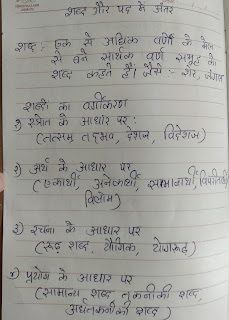Social Science Economics Chapter 1: The Story of Village Palampur (Summary of the topic taught as on 21/06/2021)
Topics Covered:
- Overview
- Introduction
- Organization of Production
- Farming in Palampur
- Non-Farm Activities in Palampur
Learning Outcomes:
- Students will be able to identify A story of hypothetical village called Palampur.
- Students will be able to identify some basic concepts relating to production.
Notes:
Introduction:
- Palampur is a small village, well-connected with neighboring villages and towns like, Raiganj.
- Bullock carts, tongas, bogeys, motorcycles, jeeps, tractors and trucks types of visible transport facilities are available on the road of Palampur.
- This village has two primary and one high school and also has a primary health centre run by the government and one private dispensary.
- About 450 different caste families are living here.
- Out of them, 80 upper caste families have land majority in this village. One third of total population is covered by schedule caste.
- Most of the houses have electric connections.
- Small manufacturing, transport, shop keeping and farming are the production activities of the village Palampur.
Organization of Production
- The goal of the organization is to produce goods and services.
- Land, Labour and capital are required for production. Natural resources fulfilled the requirements of land and water.
- For labour intensive industry, labour is required and for financial aid, capital is required.
- Physical capitals are also required for production.
- Working Capital includes Raw materials and money in hand and Fixed Capital includes tools, machines, buildings.
- Human Capital means that compiling of knowledge and enterprise to be able to put together land, labor and physical capital and produce an output either to use yourself or to sell in the market is called as Human Capital.
Summary of the topic taught as on 22/06/2021
1) Land is fixed.
2) Change in the method of cultivation.
3) Multiple cropping.
4) Modern Farming.
5) Sustainability of land.
6) Distribution of Land.
7) Labour.
8) Capital.
9) Selling of farms products.
- Land is fixed: About 75 percent population are depended on farming in Palampur. Land area under cultivation is fixed. There has been no expansion in land area under cultivation since 1960
2) Change in the method of cultivation.
Multiple cropping and modern farming are the method of cultivation used in Palampur to increase the production from land.
3) Multiple Cropping.
Method of Multiple cropping is used in Palampur. Cultivation of different types of crops on the same piece of land at same or different time is known as Multiple Cropping. For example, jowar and bajra grow during rainy season, potato is produced between October and December, Wheat is produced during winter season.
Content Analysis:
1. State the features of Hypothetical Village Palampur. (Tb pg no.1) (03 Marks)
2. What is the aim of production? Explain different factors of production in detail. (Tb pg no. 2) (05 Marks)
3. What is physical explain its type in detail? (Tb pg no. 2) (03 Marks)
4. What are the basic constraints faced by the farmers of Palampur for production? (Tb pg no. 3) (03 Marks)
5. Inspite of having fixed land in Palampur. How can one grow more from the same piece of land? (HOTS) (Tb pg no.3) (05 Marks)
6. State the reasons. Why farmers are able to grow three different crops in a year in Palampur? (Tb pg no. 3) (05 Marks)
